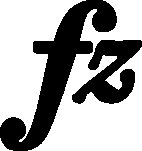



When interpreted literally, the  in FE (→GE) is puzzling, since
in FE (→GE) is puzzling, since  denotes a local dynamic climax, after which one should rather expect a diminuendo, not to mention a crescendo on one note, problematic to perform on the piano. Therefore, we are probably dealing with an inaccuracy or even a mistake. One can imagine two possibilities – the mark was misplaced (e.g. moved to the right with respect to the notation of [A]) or reversed. In the main text, we are inclined to agree with the first possibility due to a similarly distorted
denotes a local dynamic climax, after which one should rather expect a diminuendo, not to mention a crescendo on one note, problematic to perform on the piano. Therefore, we are probably dealing with an inaccuracy or even a mistake. One can imagine two possibilities – the mark was misplaced (e.g. moved to the right with respect to the notation of [A]) or reversed. In the main text, we are inclined to agree with the first possibility due to a similarly distorted  hairpin in the Concerto in F minor, op. 21, the 2nd mov., bar 84. The absence of the mark in EE1 (→EE2) seems to be an oversight, corrected in EE3.
hairpin in the Concerto in F minor, op. 21, the 2nd mov., bar 84. The absence of the mark in EE1 (→EE2) seems to be an oversight, corrected in EE3.
Compare the passage in the sources »
category imprint: Interpretations within context; Differences between sources
issues: Long accents, EE revisions, Errors in EE, Sign reversal
notation: Articulation, Accents, Hairpins




